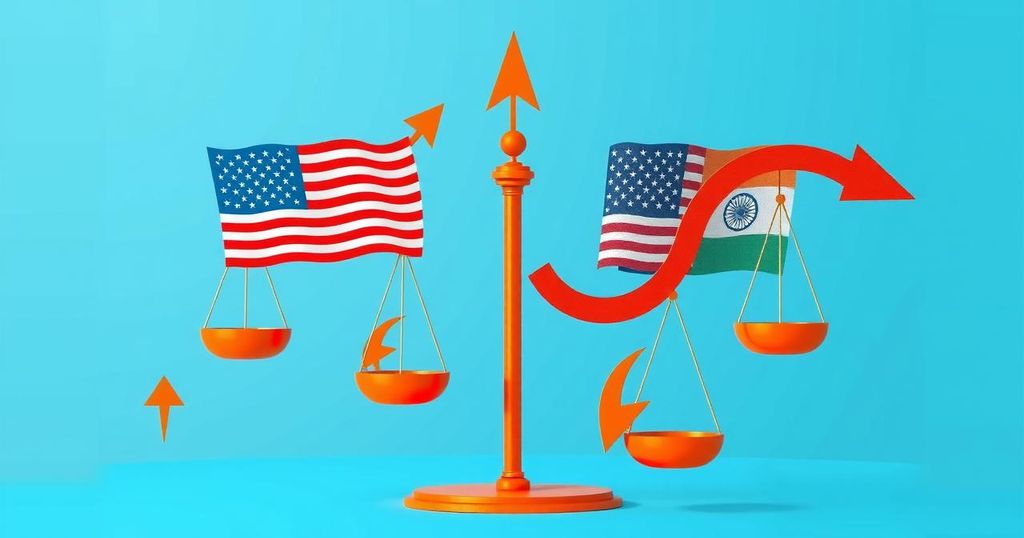India Reconsiders Tax Policies Amid U.S. Trade Pressures
India’s reconsideration of the “Google Tax” reflects its efforts to navigate trade tensions with the United States, particularly in light of pressures for tariff reductions. This move comes amidst rising costs for local advertisers and represents a larger strategy for India to engage more favorably with American interests in various sectors, including automotive and digital services. Changes in consumption tax structures may be necessary to accommodate these demands.
The recent decision by India to reconsider its implementation of the so-called “Google Tax” reflects its desire to navigate the complexities of trade relations with the United States, particularly under the current administration. This tax, which imposes a levy on advertisers using platforms like Google and Facebook, has been criticized by local businesses as it increases their advertising costs. The move may be seen as an attempt to appease the United States amidst ongoing trade tensions.
India’s introduction of the 6% equalization levy in 2016 aimed to address tax avoidance by multinational corporations but resulted in financial pressure on domestic advertisers, not the tech companies themselves. The pressure has been compounded by tariff discussions and the broader implications of international business relationships. While the initial intention was not to target any specific country, the perception in Washington has led to scrutinizing India’s trade practices, especially pertaining to American tech firms.
Recent statements from officials, indicating potential reductions in value-added tax (VAT), pose questions about India’s consumption tax structure, which can reach up to 28%. While finance officials assert these considerations are unrelated to trade negotiations, it highlights the necessity for India to adapt its policies in light of external pressures, like U.S. tariffs. The required consensus among India’s states will be necessary to implement any substantial reforms regarding consumption taxes.
Furthermore, India’s diplomatic efforts are evidently focused on alleviating pressures from U.S. tariffs on imports, notably in the auto sector. Significant tariffs enforced by the Trump administration on automotive imports and other goods have spurred India to seek a more favorable trade posture. The Indian government is trying to mitigate the risk of isolation in trade negotiations by offering concessions, such as revising the Google Tax.
The unfolding scenario illustrates India’s balancing act between maintaining domestic economic stability and accommodating the demands of a powerful trading partner. The administration’s actions signal a clear intention to push India closer to reducing trade barriers to align with U.S. tariff levels. Educated speculation points toward a potential middle ground, where concessions on both sides may be necessary to preserve favorable relations.
In conclusion, India’s reconsideration of the “Google Tax” and potential adjustments to its consumption tax regime illustrate the complexities of its trade relations with the United States. As the nation adapts to external pressures, particularly from the Trump administration, it faces the challenge of maintaining balance in its domestic policies while meeting international demands. The outcome of these negotiations could significantly impact both India’s economy and its relations with the United States, leading to possible concessions on numerous fronts to foster a more favorable trading environment.
Original Source: m.economictimes.com








Post Comment